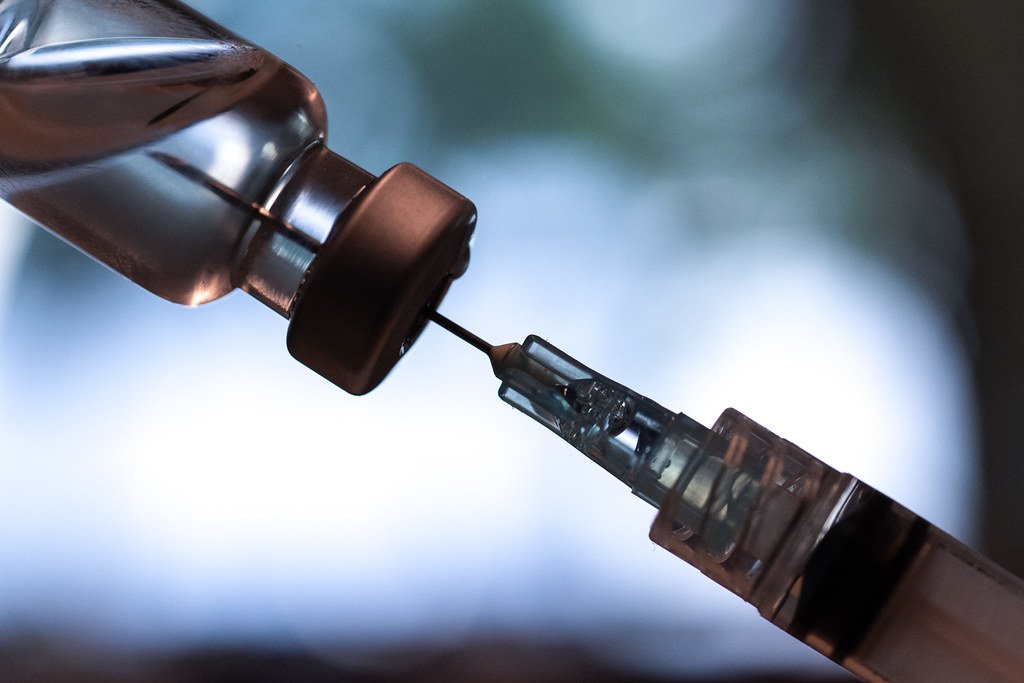Fewer than five percent of those eligible to recieve the bivalent COVID booster have gotten one. Photo courtesy of Asian Development Bank via Flickr.
By Sarah Grinnell ’26
Staff Writer
As we approach nearly three years of social distancing, mask mandates and Zoom meetings, Americans appear more than ready to leave COVID-19 in the past, an MSN article reported. But the article’s documentation of the low numbers of those receiving the new booster and the concerns these statistics could pose for another surge suggest that the danger of COVID-19 may not be gone from the United States.
According to an MSN news article, over six weeks have passed since the CDC authorized its new bivalent COVID-19 booster, yet only 14.8 million people have been vaccinated. That’s fewer than 5 percent of those eligible, the article said.
According to MSN, bivalent boosters are updated versions of Pfizer’s and Moderna’s vaccines and have been proven to provide more effective protection against novel and increasingly contagious Omicron variants. The vaccine does this by targeting both the original COVID-19 strain and the sub-variants BA.4 and BA.5, which have recently been breaking out across the country. Despite the safety and effectiveness of the vaccine, the number of people getting it is dropping. Meanwhile, around 2,000 people die from COVID-19 every week in the U.S., according to the CDC.
Thomas Russo, M.D., an infectious disease expert at the University of Buffalo Jacobs School of Medicine and Biomedical Sciences, hypothesized in a recent MSN article that these statistics could be linked in part to the overwhelming desire for the pandemic to finally be over. “People are now tuned out, trying to forget it and move on with their lives. They don’t want to hear about [COVID-19] anymore,” he explained.
Laura Sacktor ’26 expressed a similar perspective in an interview with Mount Holyoke News. “I think people are tired of [COVID-19]. They’re tired of wearing masks every day,” she said.
This public disinterest in COVID-19 has only been exacerbated by a recent 60 Minutes interview with President Joe Biden, in which the president was quoted saying the pandemic was over. Yale Medicine infectious disease specialist Dr. Scott Roberts said in an NBC article that Biden’s words have sent a “huge mixed message” to those considering the booster, making it “harder to convince those at risk who are on the fence” to get it.
Another factor contributing to low vaccination rates has been general confusion over access to the vaccine. While many eligible Americans want to get the booster, they may be unaware of how to do so. This is because “communications [about the new boosters] have not been sufficient,” William Schaffner, M.D., professor of medicine in the Division of Infectious Diseases at Vanderbilt University Medical Center, said in an MSN article. In fact, a report from the KFF, a health policy non-profit, showed that “a substantial proportion of people didn’t even know an updated booster was available and recommended,” according to the source.
Kristina Busby ’26 expressed this frustration in an interview with MHN, stating that one of her reasons for not getting the booster was because “I just didn’t know there was one and there hasn’t been much info[rmation].” She continued, “I want to get it but it’s super under the radar.”
Accessibility offers another barrier. Although the University of Massachusetts Amherst vaccine clinic is open to all ages 12 and older on Thursdays from 12-4 p.m. and Fridays from 10 a.m.-2 p.m., Mount Holyoke students have cited transportation and time restraints as barriers to getting the vaccine. “It’s been hard to find time to take multiple buses to a location where I can get it,” Busby explained. “Public transportation is not the best out here, which makes sense because it’s a rural area, but it also means that it’s not very accessible or dependable,” she continued, pointing out that it is especially difficult for college students who have stringent time constraints.
According to an NBC article, these various factors have raised widespread concern within the health care community due to decreasing mask guidelines. This has led scientists to predict a particularly bad cold and flu season around Thanksgiving, exacerbated by a potential surge in COVID-19 cases. Despite this data, Laura Sacktor ’26 pointed out that many Americans “believe that if they’ve already had [COVID-19] before they are now immune and don’t need the new booster.” Shaffner took a similar stance in an MSN article, which acknowledged that this “‘natural immunity’ … eventually wanes.”
Additionally, Busby pointed out that “Long [COVID-19 is definitely a thing.” In Busby’s view, “getting the new booster is like getting the yearly flu shot: it’s going to lower your risk of getting the disease, lower your reaction to it and lower your ability to spread it to a bunch of potentially immunocompromised people.” Sacktor added that “even if you’ve had [COVID-19] before, you’re still susceptible to new strains and versions of [COVID-19]. Even if you’re not at risk, people around you are and you could be a potential asymptomatic person and spread it to other people who are at high risk.”
Currently, roughly 68 percent of the U.S. population is considered fully vaccinated by the CDC, an NBC article says. As the article describes, the U.S. has shipped more than 25 million doses of the bivalent booster to thousands of sites across the nation to increase the availability of the bivalent booster as well.

